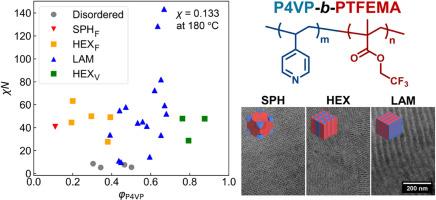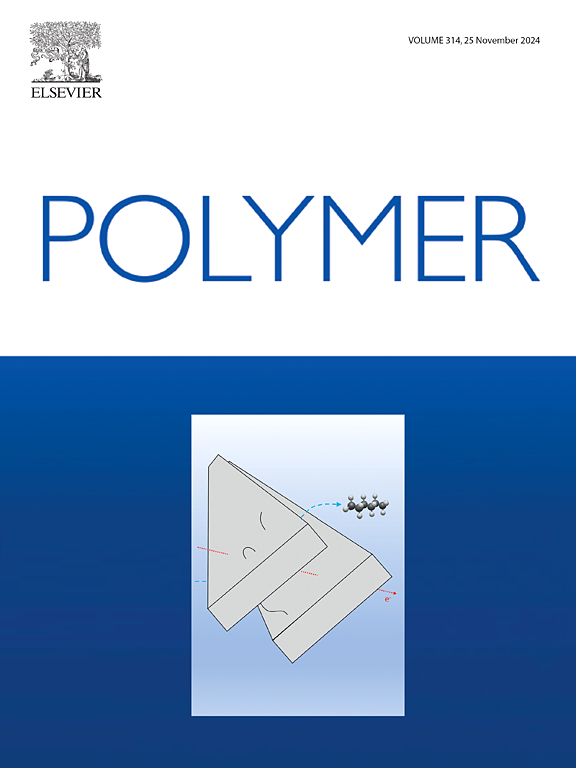Synthesis and characterization of poly(4-vinylpyridine)-block-poly(2,2,2-trifluoroethyl methacrylate) for manipulating periodic nanostructured architectures
IF 4.1
2区 化学
Q2 POLYMER SCIENCE
引用次数: 0
Abstract
Designing appropriate molecular structures is essential for employing the microphase-separated structures of block copolymers in a wide range of applications. This study selected poly(4-vinylpyridine)-block-poly(2,2,2-trifluoroethyl methacrylate) (P4VP-b-PTFEMA) owing to its strong repulsive interactions originating from the fluorine in PTFEMA and its compatibility with additives through P4VP. Thirty distinct P4VP-b-PTFEMA block copolymers with varying compositions were synthesized using reversible addition-fragmentation chain-transfer polymerization. d-spacings of 8.9–59.7 nm were obtained, highlighting the successful preparation of microphase-separated structures with various sizes. Additionally, the introduction of resol as a cross-linking agent, which selectively interacts with P4VP, significantly changed the microphase-separated structures. The findings of this study provide valuable insights into controlling and manipulating block copolymer structures, which has important implications for future applications.


求助全文
约1分钟内获得全文
求助全文
来源期刊

Polymer
化学-高分子科学
CiteScore
7.90
自引率
8.70%
发文量
959
审稿时长
32 days
期刊介绍:
Polymer is an interdisciplinary journal dedicated to publishing innovative and significant advances in Polymer Physics, Chemistry and Technology. We welcome submissions on polymer hybrids, nanocomposites, characterisation and self-assembly. Polymer also publishes work on the technological application of polymers in energy and optoelectronics.
The main scope is covered but not limited to the following core areas:
Polymer Materials
Nanocomposites and hybrid nanomaterials
Polymer blends, films, fibres, networks and porous materials
Physical Characterization
Characterisation, modelling and simulation* of molecular and materials properties in bulk, solution, and thin films
Polymer Engineering
Advanced multiscale processing methods
Polymer Synthesis, Modification and Self-assembly
Including designer polymer architectures, mechanisms and kinetics, and supramolecular polymerization
Technological Applications
Polymers for energy generation and storage
Polymer membranes for separation technology
Polymers for opto- and microelectronics.
 求助内容:
求助内容: 应助结果提醒方式:
应助结果提醒方式:


